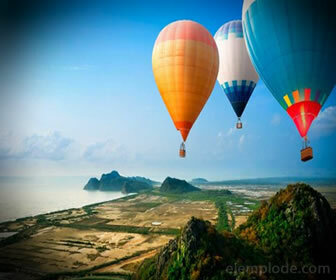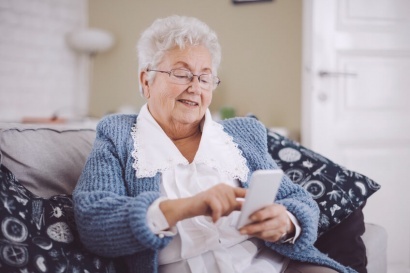Gas Characteristics
Chemistry / / July 04, 2021
The gases are substances found in the gaseous state. It can be pure substances, such as natural gas, or mixtures such as air. In reality, all matter is capable of presenting itself in this state of aggregation, only under certain conditions. However, it is easier to determine the general properties of gases than they are at room temperature.
Gases are defined by a feature set that are observed both in the behavior of its particles and in the amount of energy they store. These characteristics will be mainly physical, but they will also determine the way in which they participate in chemical reactions.
The characteristics of the gases are:
In general, gases show the following characteristics, each of which will be explained separately, in more detail.
- Very low viscosity
- Very low density
- They have the volume of the container that contains them
- Its volume can be varied with pressure and temperature
- High diffusivity
- High compressibility
- High expandability
- High kinetic energy
- Very low intermolecular forces
- They need catalysts to react
Very low viscosity
Viscosity is the resistance of substances to flow. In the case of gases, this property has a very low or zero value, since their particles are fluttering in no order. It is only possible to direct them by applying pressure or vacuum, and having a network of pipes through which you want to circulate them.

Very low density
Density is a physical property of matter that indicates how much mass of a substance there is in each unit of volume. The particles of a gas are widely separated from each other, resulting in a low mass in each unit of volume: a very low density. If a closed container contains a gas, the density will depend on how much of it there is.
Density is a property of gases that can be varied. If we enclose a gas and reduce the volume it covers, it will become more concentrated. This will cause a higher density. On the other hand, if the volume it covers is increased, the particles will disperse more, leaving less in each unit of volume. The latter results in a lower density.
They have the volume of the container that contains them
A gas does not have a definite volume. It will take the shape of the container that contains it: a form that is not permanent and cannot be preserved if the container is opened.
Its volume can be varied with pressure and temperature
Gases respond remarkably to changes in pressure and temperature. These changes are observed in the volume occupied by its particles, in the following ways:
- As the pressure increases, the particles stick together more, encompassing less volume.
- By reducing the pressure, the particles disperse more, encompassing more volume.
- As the temperature rises, the particles become more agitated, encompassing more volume.
- As the temperature is lowered, the particles are less agitated, encompassing less volume.
High diffusivity
When two or more gases are mixed, the particles of one go to spread among others, so uniformly that each part of the mixture is going to be identical to the other. Thanks to the fact that the gases have a constant internal movement, they can be combined easily and without the need for agitation.
High compressibility
Gases have great compressibility thanks to the fact that its particles are relatively distant, one from another. High pressure can be applied to them to decrease the volume they cover, and they will still have the ability to move to the characteristic degree of a gas. This is contrary to liquids and solids, which are incompressible substances.
High expandability
The gases, due to the high agitation of the molecules that compose them, respond by expanding when the pressure is reduced or the volume they occupy is increased. Although the volume becomes hundreds of times greater, the particles of a gas will continue to hit every corner of the container.

High kinetic energy
Gases are distinguished from liquids and solids by the movement of their particles. In a solid, they are compact and neat. In a liquid, they move in layers and if left standing they do not flow. In gases, the particles are in constant motion, so they carry with them a high kinetic energy.
Very low intermolecular forces
Gas molecules do not stay still or attached to each other, but remain hovering, regardless of the size of the container that contains them. This is an indicator that intermolecular forces of these are too low and insufficient to meet.
This differentiates them from liquids and solids, whose particles are influenced by large intermolecular forces, which give them a defined physical shape and consistency.
They need catalysts to react
Because of the dispersion of the gas particles, it is difficult for them to act in a chemical reaction. Therefore, catalysts are available, which offer a sufficient contact area between the gas and the other reactant.
This is the case when hydrogenation is to be carried out. A mesh of platinum, for example, or another metal that works for this purpose is placed on the reagent. Hydrogen gas can be deposited on this mesh, to react with the reagent and generate the product.
It may interest you:
- Characteristics of the liquid state.
- Solid state characteristics.



